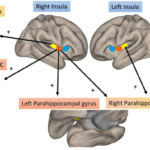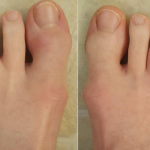
Phil Mickelson, shown here at the 2009 US Open, in Farmingdale, N.Y., announced in August 2015 that he had been diagnosed with psoriatic arthritis, drawing national attention to the condition.
David W. Leindecker/shutterstock.com
LONDON—Rheumatologists need to make the management of psoriatic arthritis (PsA) “a little more complex,” treating different tissues individually and doing more to help treat and prevent co-morbidities, an expert said here at the Annual Congress of the European League Against Rheumatism (EULAR) 2016.
Iain McInnes, MD, PhD, director of the Research Institute for Infection, Immunity and Inflammation at the University of Glasgow, reminded his audience during a scientific session that co-morbidities in PsA are all over the map, from cardiovascular disease to metabolic syndrome to gastrointestinal problems.
And it’s the responsibility of the rheumatologist to stay on top of all aspects of the health issues that can arise from the disease, even if they aren’t his primary field, Dr. McInnes said.
“It is our job as rheumatologists to at least entertain the thought that such co-morbidities should be, one, recognized and, two, treated,” he said. “Every patient that comes to our clinic in Glasgow has their weight measured and their blood pressure measured and I ask about both of those elements of their life.”
And talk is empty if it isn’t followed by action, he said.
“If I tell them that losing weight is important but I never measure their weight, it’s like telling your teenager to go and tidy their bedroom,” he said. “The one thing that isn’t going to happen is that their bedroom is going to be tidied.”
The link between PsA and other processes in the body is tied to evolution, he said. As an example, he mentioned tumor necrosis factor and serotonin. Before medical advances, in order to heal, people needed quiet places to sleep to build up enough energy for their immune systems to fight off illness. So it shouldn’t be too surprising to learn, as a paper showed earlier this year, that circulating TNF is highly correlated to the bioavailability of serotonin in the brain.1
“When a patient with psoriatic arthritis tells you they’re depressed—and by the way I would urge you to ask—they’re not telling you that they are only depressed about having the disease, which is an understandable reactive phenomenon; they’re actually telling you they comprise a biological syndrome whereby the brain and the peripheral inflammatory system are evolutionarily required to relate to each other and, therefore, unsurprisingly the patient’s syndrome comprises diminution of life satisfaction.”
Regarding the main treatments for PsA, he noted that the evidence for the effectiveness of conventional disease-modifying anti-rheumatic drugs is fairly thin. For methotrexate, just three randomized controlled trials (RCTs) involving 93 patients have been conducted; for sulfasalazine, seven RCTs with 666 patients have been conducted; for leflunomide, one RCT with 190 patients has been conducted; and for cyclosporine, three RCTs with 206 patients have been conducted.
“I think what should probably distress you is the paucity of evidence we have to support the use of these cheap and familiar drugs whose use is very comfortable in our practice,” he said. “That has undoubtedly held us back in really optimizing the use of these agents.” In one trial on methotrexate, the primary outcome was not even met, he said.
He underscored the importance of treating each tissue involved in PsA as its own problem—the joints should be given their own attention, the skin its own attention and so on.
“In the psoriatic arthritis field we are taking on different tissues, all potentially with variable capacity to respond to any given agent,” Dr. McInnes said.
TNF-blockers tend to achieve minimal disease activity—a status based on tender joint counts, pain and other factors, and associated with less radiographic progression—30–40% of the time.2
“There is an enormous amount of unmet need,” he said.
But more attention has been paid to other targets that might be more relevant than drugs that have been derived from the rheumatoid arthritis field, he said. IL-12/23 inhibitors, as well as IL-17A inhibitors, have yielded promising results so far, he said.3,4
He said clinicians need to “systematically work our way through the patient’s different tissue response. … I think at the moment we cannot consider this a unified syndrome. We are still, I think, obliged to treat each of the tissues on its own merits.” Then, he said, “we will make a significant difference in impact of the quality of life of our patients.”
Axial Spondyloarthritis
In another talk from the session, Filip van den Bosch, MD, PhD, head of rheumatology at Ghent University, said that axial spondyloarthritis (axial SpA) needs to be treated—given the link between disease activity and structural damage and mortality later on, but he cautioned against an over-reliance on the presence of HLA‑B27 and MRI findings.5
“I would warn you against making a diagnosis of B27-itis or MRI-itis—really stick with your clinical feeling. It’s the best we have. We’re desperately looking at other factors to find out how we can more objectively measure this, but this is I think the first thing: follow your clinical judgment.”
Regarding the main treatments for PsA, the evidence for the effectiveness of conventional disease-modifying anti-rheumatic drugs is fairly thin.
Even with the advent of new therapies, such as anti-TNF and anti-IL-17 drugs, which have been shown to be effective, non-steroidal anti-inflammatory drugs (NSAIDs) are still the “cornerstone” in axial SpA, he said.6,7
“They work; they can actually help you distinguish mechanical from inflammatory back pain,” he said. “But you have to take into account that someone who is really a primary non-responder should be critically reevaluated.” Such patients could have been incorrectly diagnosed, he said.
Evidence shows that a young patient with high disease activity but low functional trouble and who has objective signs of inflammation is the ideal candidate to respond to anti-TNF treatment. The opposite also seems to be true: the older the patient without objective signs of inflammation, the greater the chances of treatment discontinuation, he noted.8
Other research has shown which patients tend to have a better chance of having a major response when an anti-TNF is added as opposed to continuing on NSAIDs. Those with low function, high inflammation, age below 40 and who are HLA-B27 positive tend to be the best candidates.9 Dr. van den Bosch cautioned clinicians not to “become a computer” but only to use such information as a guide.
He is now working on a trial looking at the value of tight control in spondyloarthritis. Real-life outcomes—not disease-activity scores—should be the guide, he said.
“It doesn’t make sense to say, ‘I’m going to treat you more intensively if your ASDAS is above a certain point,’ and then the endpoint of your trial is, ‘Well, I have more patients with an ASDAS below that point,’” he said. “I think you have to look at other endpoints—ideally structural damage, quality of life, getting back to work.”
Thomas R. Collins is a freelance medical writer based in Florida.
References
- Krishnadas R, Nicol A, Sassarini J, et al. Circulating tumour necrosis factor is highly correlated with brainstem serotonin transporter availability in humans. Brain Behav Immun. 2016 Jan;51:29–38.
- Mease PJ, Heckaman M, Kary S, et al. Application and modifications of minimal disease activity measures for patients with psoriatic arthritis treated with adalimumab: Subanalyses of ADEPT. J Rheumatol. 2013 May;40(5):647–652.
- McInnes IB, Kavanaugh A, Gottlieb AB, et al. Efficacy and safety of ustekinumab in patients with active psoriatic arthritis: 1 year results of the phase 3, multicentre, double-blind, placebo-controlled PSUMMIT 1 trial. Lancet. 2013 Aug 31;382(9894):780–789.
- McInnes IB, Mease PJ, Kirkham B, et al. Secukinumab, a human anti-interleukin-17A monoclonal antibody, in patients with psoriatic arthritis (FUTURE 2): A randomised, double-blind, placebo-controlled, phase 3 trial. Lancet. 2015 Sep 19;386(9999):1137–1146.
- Ramiro S, van der Heijde D, van Tubergen A, et al. Higher disease activity leads to more structural damage in the spine in ankylosing spondylitis: 12-year longitudinal data from the OASIS cohort. Ann Rheum Dis. 2014 Aug;73(8):1455–1461.
- Baeten D, Sieper J, Braun J, et al. Secukinumab, an Interleukin-17A inhibitor, in ankylosing spondylitis. N Engl J Med. 2015 Dec 24;373(26):2534–2548.
- Landewe R, Braun J, Deodhar A, et al. Efficacy of certolizumab pegol on signs and symptoms of axial spondyloarthritis including ankylosing spondylitis: 24-week results of a double-blind randomised placebo-controlled Phase 3 study. Ann Rheum Dis. 2014 Jan;73(1):39–47.
- Arends S, Brouwer E, van der Veer E, et al. Baseline predictors of response and discontinuation of tumor necrosis factor-alpha blocking therapy in ankylosing spondylitis: A prospective longitudinal observational cohort study. Arthritis Res Ther. 2011 Jun 20;13(3):R94.
- Vastesaeger N, van der Heijde D, Inman RD, et al. Predicting the outcome of ankylosing spondylitis therapy. Ann Rheum Dis. 2011 Jun;70(6):973–981.


